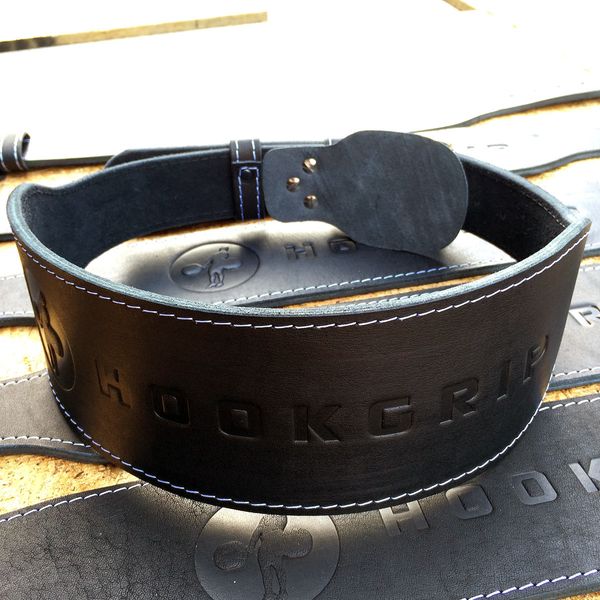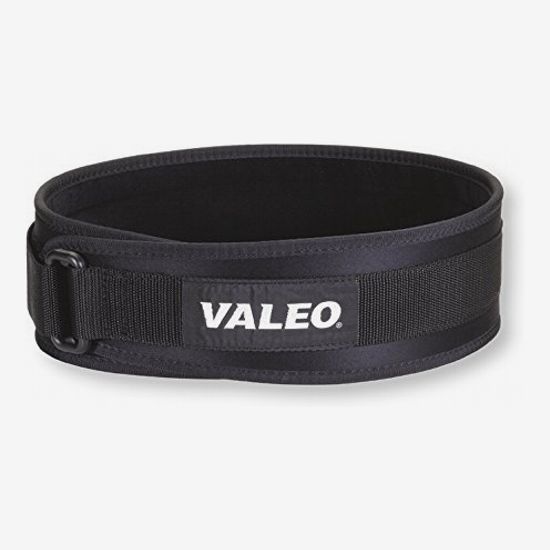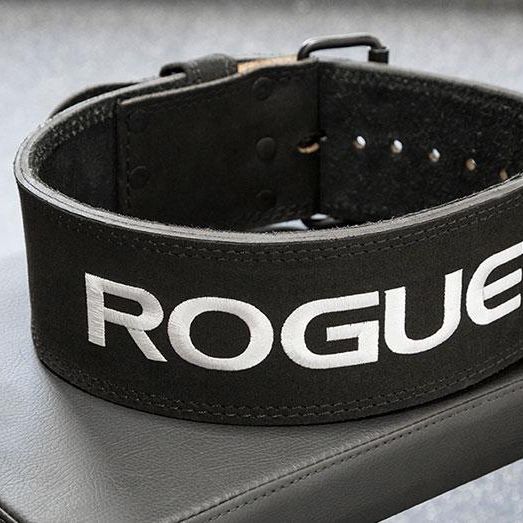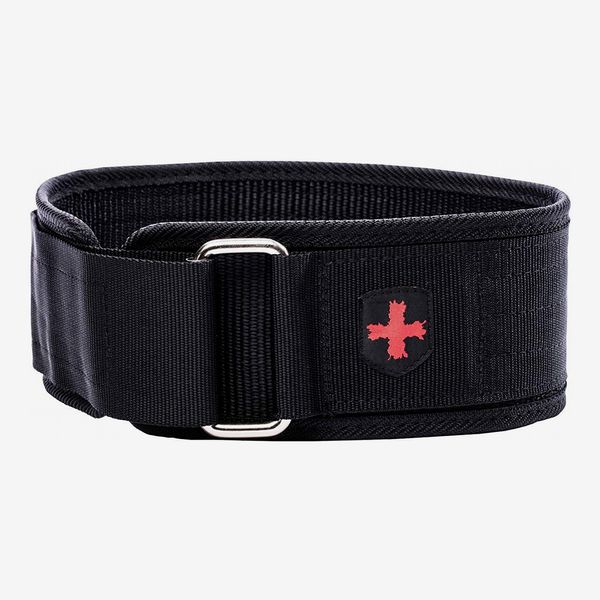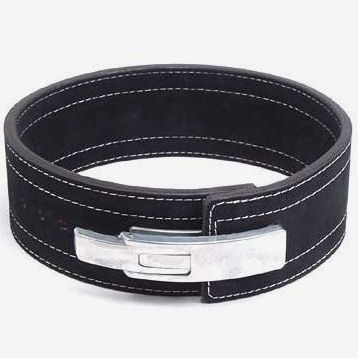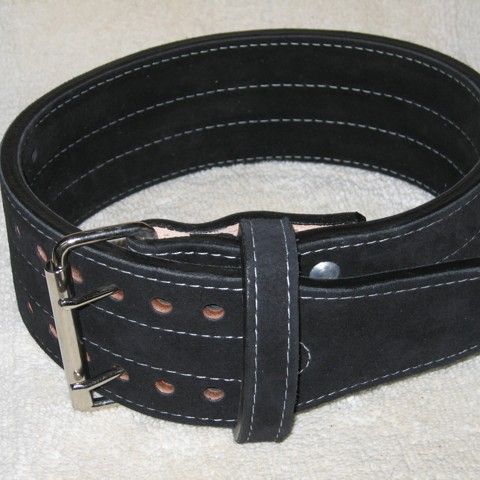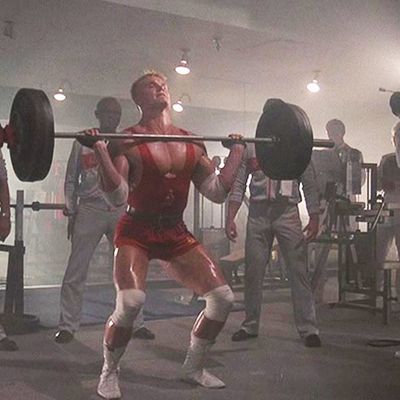
Maybe you’ve been thinking about weightlifting — and let’s be honest, half the fun of starting a new sport is buying the gear. While you might be interested in getting yourself a belt, though, take note: “For a beginner, I don’t recommend a belt,” says Dan North, the founder and owner of Fortitude Fitness. “They really need to learn how to brace and stabilize their midline without it … a newer athlete should be focused on positions and correct bracing, and not be quick to just add weight to the bar until at least six months to a year of steady training.” Jason Li, a trainer at Soho Strength Lab, seconds this, saying, “Most people shouldn’t use a belt unless they’ve spent at least one to two years lifting and have solid technique. A belt is a tool that aids already good lifting. It is not a substitute for basic training.”
Okay, noted. But say you’ve been weightlifting for a while. Weightlifting belts are both cool-looking and useful, and something you may want to incorporate into your routine as you advance to a more experienced level of lifting. “I recommend lifters try a few different types when first being introduced to the idea of using a belt,” Li says. “The lifter should pick the one that affords the most support, comfort, and consistency in performance.” A weightlifting belt should help you “increase internal pressure,” North says, “and can help with adding more weight to your lifts.” If you’re ready to take your lifting to the next level, we have Li and North’s picks below, along with recommendations from other weightlifting instructors and coaches for the best belts for men and women, competitive weightlifting, and more.
Best weightlifting belt
North recommends Hookgrip’s Russian Weightlifting Belt. “The leather stretches just enough to give you something to brace against while not feeling like you are being suffocated by it,” he says. The buckle closure also makes this belt particularly secure. Li also recommended this belt, saying, “I’ve used all kinds of belts for powerlifting and weightlifting over the years. The Hookgrip belt offers the best width to not cut into my ribs while lifting.” He also says that the kind of leather used in Hookgrip belts “seems to be the most flexible without losing support,” and that when he bought a new belt “there was no break-in period and it fit my waist perfectly out of the package.”
Best less-expensive weightlifting belt
“The Velcro closure allows you to put on and take off the belt quickly while also allowing a very customizable fit,” North says. “It’s also really affordable at only $20.” The one thing to keep in mind about these belts, he says, is that the Velcro does wear out eventually, and will have to be replaced.
Best weightlifting belt for both women and men
Colter Mancini, and instructor at the Training Lab in New York, says they use the Rogue Echo Lifting Belt because “it’s a little thicker than other belts, which adds support.” He describes the width as not “overly constricting,” so that the belt “provides the best of both worlds.” It can be worn by most women and men, he says, and “has plenty of holes for adjustments” so that it will fit even smaller women. “It’s an all-around great belt for usage by varying experience and different-sized athletes,” says Mancini.
Best belt for competitive weightlifting
“For weightlifting, where athletes compete in the snatch, clean, and jerk, we have to make sure the belt is under 12 centimeters wide,” says Kurt Roderick, owner and head weightlifting coach at Murder of Crows Barbell Club in Brooklyn. “I actually prefer a Velcro belt for the competition lifts because of the low profile, which allows one to keep the bar close during the pull without catching the belt.” Roderick recommends the Harbinger four-inch belt because it is “cheap and gets the job done.”
Best belt for powerlifting
Roderick explains that for powerlifting — which is a three-part weightlifting sport involving squatting, bench pressing, and deadlifting — you’ll have to find a belt approved by the federation you’re competing in. “Our gym competes in the USAPL (USA Powerlifting) federation, which has only a limited number of suppliers who provide approved belts at national level competitions,” says Roderick. “Most of our national level athletes prefer the Inzer Lever Belt.”
Best weightlifting belt for heavy squats
For a heavy squat, Roderick likes a sturdy belt that “allows for greater abdominal compression compared to the Velcro.” He recommends the four-inch Best Belt, which can also be used for a dead lift. (And it comes in a lot of nice colors.)
The Strategist is designed to surface the most useful, expert recommendations for things to buy across the vast e-commerce landscape. Some of our latest conquests include the best acne treatments, rolling luggage, pillows for side sleepers, natural anxiety remedies, and bath towels. We update links when possible, but note that deals can expire and all prices are subject to change.
